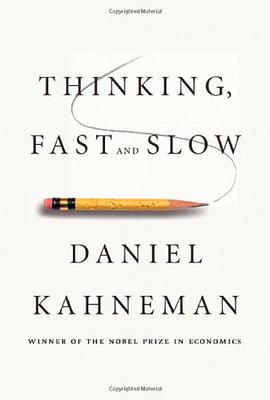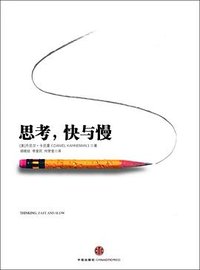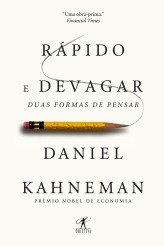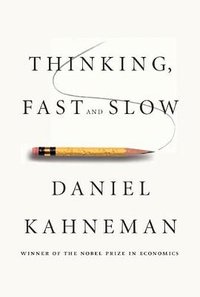
Daniel Kahneman
簡介
In the highly anticipated Thinking, Fast and Slow , Kahneman takes us on a groundbreaking tour of the mind and explains the two systems that drive the way we think. System 1 is fast, intuitive, and emotional; System 2 is slower, more deliberative, and more logical. Kahneman exposes the extraordinary capabilities—and also the faults and biases—of fast thinking, and reveals the pervasive influence of intuitive impressions on our thoughts and behavior. The impact of loss aversion and overconfidence on corporate strategies, the difficulties of predicting what will make us happy in the future, the challenges of properly framing risks at work and at home, the profound effect of cognitive biases on everything from playing the stock market to planning the next vacation—each of these can be understood only by knowing how the two systems work together to shape our judgments and decisions.
Engaging the reader in a lively conversation about how we think, Kahneman reveals where we can and cannot trust our intuitions and how we can tap into the benefits of slow thinking. He offers practical and enlightening insights into how choices are made in both our business and our personal lives—and how we can use different techniques to guard against the mental glitches that often get us into trouble. Thinking, Fast and Slow will transform the way you think about thinking.
contents
Introduction 3
Part I Two Systems
1 The Characters of the Story 19
2 Attention and Effort 31
3 The Lazy Controller 39
4 The Associative Machine 50
5 Cognitive Ease 59
6 Norms, Surprises, and Causes 71
7 A Machine for Jumping to Conclusions 79
8 How Judgments Happen 89
9 Answering an Easier Question 97
Part II Heuristics and Biases
10 The Law of Small Numbers 109
11 Anchors 119
12 The Science of Availability 129
13 Availability, Emotion, and Risk 137
14 Tom W's Specialty 146
15 Linda: Less is More 156
16 Causes Trump Statistics 166
17 Regression to the Mean 175
18 Taming Intuitive Predictions 185
Part III Overconfidence
19 The Illusion of Understanding 199
20 The Illusion of Validity 209
21 Intuitions vs. Formulas 222
22 Expert intuition: when can we trust it? 234
23 The Outside View 245
24 The Engine of Capitalism 255
Part IV Choices
25 Bernoulli's Errors 269
26 Prospect Theory 278
27 The Endowment Effect 289
28 Bad Events 300
29 The Fourfold Pattern 310
30 Rare Events 320
31 Risk Policies 334
32 Keeping Score 342
33 Reversals 353
34 Frames and Reality 363
Part V Two Selves
35 Two Selves 377
36 Life as a Story 386
37 Experienced Well-Being 391
38 Thinking about Life 398
Conclusions 408
Appendix A Judgment Under Uncertainty 419
Appendix B Choices, Values, and Frames 433
Notes 449
Acknowledgments 483
Index 485



